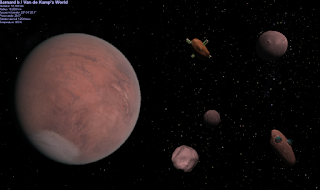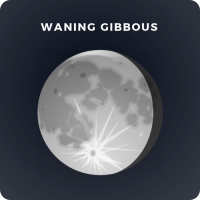Have you ever wondered about the fascinating history of exoplanet discoveries? What if I told you that the story of Barnard's Star and its elusive planets is a captivating tale of scientific perseverance, unexpected twists, and the relentless pursuit of knowledge? In this blog post, we'll embark on a journey through time, exploring the groundbreaking work of astronomer Peter van de Kamp and the intriguing case of the planets that never were. Join us as we unravel the mysteries surrounding Barnard's Star and discover the remarkable insights gained along the way.
The Allure of Barnard's Star
Barnard's Star, a small red dwarf located just 5.9 light-years away from Earth, has long captivated the minds of astronomers and science enthusiasts alike. As the fourth closest star to our Sun, it has been a prime target for exoplanet searches, holding the promise of potentially harboring worlds beyond our own solar system.
Peter van de Kamp's Groundbreaking Claims
In the mid-20th century, astronomer Peter van de Kamp and his team at the Sproul Observatory began a meticulous study of Barnard's Star. Utilizing the powerful technique of astrometry, they sought to detect tiny perturbations in the star's proper motion, which could indicate the presence of orbiting planets. After years of painstaking observations and rigorous data analysis, van de Kamp made a stunning announcement in 1963: he had discovered evidence of a gas giant, slightly more massive than Jupiter, orbiting Barnard's Star at a distance of 4.4 AU.
The Plot Thickens: A Second Planet Emerges
As van de Kamp and his colleagues continued their observations, the story took an even more intriguing turn. In 1969, they published a follow-up paper claiming that the perturbations were not caused by a single planet, but rather by two gas giants with masses of 1.1 and 0.8 times that of Jupiter. The scientific community was astounded by these findings, as they seemed to provide compelling evidence for the existence of exoplanets.
Doubts Arise: Inconsistencies Emerge
However, as other astronomers began to scrutinize van de Kamp's observations, inconsistencies started to surface. Using more advanced techniques and independent analyses, they found that the claimed perturbations were not present in the data. This raised serious doubts about the existence of the proposed planets orbiting Barnard's Star.
The Unraveling of a Discovery
Further investigations revealed that the apparent perturbations observed by van de Kamp were likely a false positive, caused by maintenance work performed on the refractor telescope lenses between 1949 and 1957. These instrumental effects had not been properly accounted for in the data analysis, leading to the erroneous detection of planetary signals.
Van de Kamp's Unwavering Conviction
Despite the mounting evidence against his claims, Peter van de Kamp remained steadfast in his belief in the existence of the two planets he had observed. Even in the face of contradictory findings, he continued to argue passionately for their reality until his passing in 1995.
A New Chapter: The Discovery of Barnard's Star b
In a fascinating twist, a new chapter in the story of Barnard's Star unfolded in 2018. Astronomers announced the discovery of a planet orbiting the star, but it was vastly different from the gas giants proposed by van de Kamp. Named Barnard's Star b, this newly found world is a super-Earth, approximately three times more massive than our own planet, and orbits at a distance of just 0.4 AU from its host star.
Conclusion
The tale of Peter van de Kamp and the planets that never were serves as a testament to the challenges and complexities of exoplanet detection. While his claims ultimately proved to be incorrect, van de Kamp's dedication and perseverance in the search for worlds beyond our solar system paved the way for future discoveries. The case of Barnard's Star reminds us that the path to scientific truth is often filled with twists, turns, and unexpected revelations. As we continue to explore the cosmos and unravel its mysteries, let us embrace the spirit of curiosity and the willingness to question even the most compelling of claims. The story of Barnard's Star may have taken an unexpected turn, but it has undoubtedly enriched our understanding of the universe and the exoplanets that call it home.
This article was written for FreeAstroScience.com by Gerd Dani, President and blogger at freeastroscience.com, where complex scientific principles are simplified for science enthusiasts.
Related Sources:
- The complicated history of planets around Barnard's star
- Peter van de Kamp: the astronomer who was wrong in all the right ways
- A candidate super-Earth planet orbiting near the snow line of Barnard's star
- https://www.centauri-dreams.org/2012/08/16/barnards-star-no-earth-mass-planets-found/
- https://www.sciencenews.org/article/50-years-ago-barnards-star-planet
- https://www.scientificamerican.com/article/a-frozen-super-earth-may-orbit-barnards-star/
- https://www.forbes.com/sites/brucedorminey/2021/05/18/astronomers-nix-idea-of-super-earth-around-barnards-star/
- https://www.nationalgeographic.com/science/article/possible-super-earth-found-nearby-barnards-star-space
- https://en.wikipedia.org/wiki/Barnard%27s_Star
- https://astronomy.utexas.edu/highlights/in-the-news/entry/astronomers-disprove-planet-orbiting-nearby-barnard-s-star
You Might Also Like :


















0 commenti:
Post a Comment